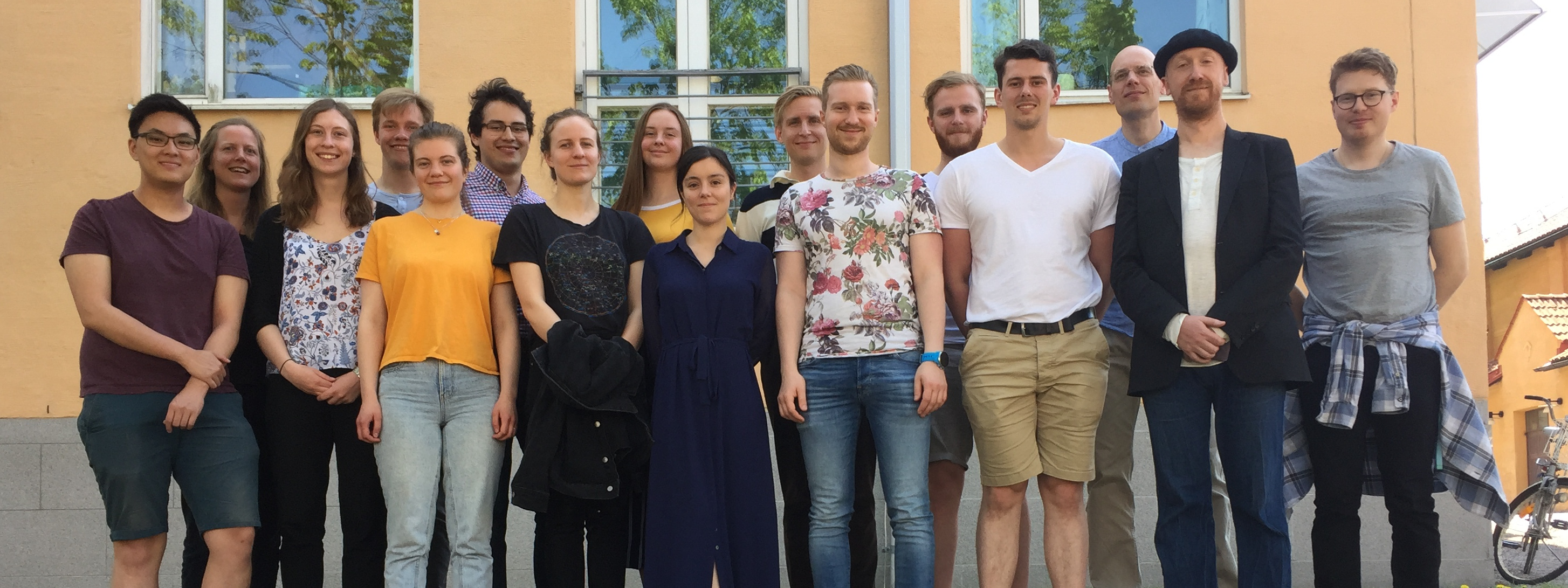Christian Simonsson
Titel: Mathematical modelling of diffuse liver disease
Opponents: Jan Boren and Matthias König
Date: 2023-03-01
Abstract: Christian has worked on constructing mathematical models in the context of NAFLD treatment and disease progression. One project has been focusing on creating a minimal mathematical model capable of simulating different dietary interventions, such low carb high fat diet (LCHF), and high fructose (HC) diets. To better understand treatment connection to changes in lipid fluxes. The second project has focused on determining liver function before hepatectomy, which is the only treatment option for HCC and liver metastasis. The two different projects have focused on each end of the NAFLD disease spectra, and the coming project will focus on modelling of non-alcoholic steatohepatitis (NASH)
Tilda Herrgårdh
Titel: Hybrid modelling for diabetes and stroke prevention
Opponents: Maria Kjellsson, Anna Nordström
Date: 2023-03-02
Abstract: The long-term goal that the thesis will be a part of is to have a tool for prevention of metabolic and cardiovascular diseases, particularly stroke and its common precursor diabetes. The plan is to use a digital twin and hybrid modelling. A digital twin can be used to make personalized predictions for different scenarios – lifestyle changes, diets, drugs, etc. – that can then be evaluated and compared. These predictions can include the long-term dynamics of different risk factors relevant for cardiovascular disease, such as BMI or fasting plasma glucose, or short term dynamics such as meal response glucose. These predictions can for example be used to understand the dynamics behind disease progression and to get continuous updated on progress of the changes made in real life, which can hopefully increase medical pedagogics and motivation. The long-term predictions of risk factors can be used in a hybrid modelling scheme as input in a machine learning model to get your risk score for having a stroke within a certain time span. The thesis covers the first steps towards, and a first example of the idea described above, as well as the development of models describing some of the different mechanisms relevant to diabetes and stroke progressions that can later be used in a comprehensive model of the entire progression.
Nicolas Sundqvist
Titel: Systems modelling of human metabolism: Methods for 13C metabolic flux analysis and applications to the brain
Opponents: Elizabeth Klint, Dr. Katharina Nöh, Dr. Joao Duart
Date: 2023-01-17
Abstract: Nicolas has worked on constructing a mathematical model that can explain the mechanism that regulate the metabolism in the brain. This mathematical model explains what the cerebral metabolic response looks like in response neuronal activity induced by a visual stimulus. Furthermore, the work also includes how these mechanisms for the metabolic response connect to the mechanisms that of the neurovascular coupling. This work has resulted in a manuscript recently accepted for publication and will formed a base for future modelling endeavours. Additionally, Nicolas has worked with modelling intracellular metabolic fluxes using measurements of 13C isotope labels. A lot of this work have gone into method development for modelling stoichiometric models for 13C metabolic flux analysis (MFA) and has resulted in a publication where we present a method for validating such models when there is an uncertainty with respect to experimental measurement uncertainty. The plan for the continued work of Nicolas’ doctoral studies is to apply the methodologies for 13C MFA to a system for studying neurodegenerative diseases in neurological cell lines. As well as to investigate the mechanisms of the regulation of oxygen metabolism with respect to activity in different types of neuronal cells.

